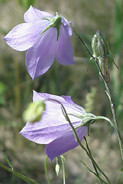 Loading... Please wait...
Loading... Please wait...- Home
- SEEDS
- SEED MIXES
- BUY PLANTS
- Info Request
-
Educational Videos
- Greenhouse Transplanting Demonstration
- Native Seed Cleaning demonstration at Ion Exchange Native Seed and Plant Nursery
- Attracting Butterflies
- Bidens - Bidens cernua Harvest Video
- Big Blue Stem Harvest
- Butterfly Milkweed Video
- Button Blazingstar - Liatris aspera Video
- Buttonbush - Cephalanthus occidentalis Video
- Canada Anemone - Anemone canadensis Harvest Video
- Cardinal Flower - Lobelia cardinalis Video
- Control Burn - Wildflower Field
- Cream Gentian - Gentiana flavida
- Culver's Root - Veronicastrum virginicum Video
- Cup Plant - Silphium perfoliatum Video
- Dormant Seeding | Planting
- Earthyman's Favorite Wildflowers Video
- Eco-Friendly Golf Course Seed Mix
- Floating Islands
- Fringed Loosestrife - Lysimachia ciliata Video
- Giant Yellow Hyssop - Agastache nepetoides Video
- Indiangrass - Sorghastrum nutans Video
- Iowa Prairie Partner Program
- Leadplant - Amorpha canescens (Potted) Video
- Meadow Blazingstar - Liatris ligulistylis
- Midland Shooting Stars - Dodecatheon meadii Video
- Native Plant Nursery Field Irrigation Experiment
- Nodding Onion - Allium cernuum Video
- Ohio spiderwort - Tradescantia ohiensis Video
- Old Man's Beard - Clematis virginiana blooms Video
- Oxeye Sunflower - Heliopsis helianthoides Video
- Prairie Spiderwort - Tradescantia bracteata
- Purple Coneflower - Echinacea purpurea Video
- Rain Garden or Water Garden Video
- Rattlesnake Master - Eryngium yuccifolium Video
- Riverbank Stabilization - Wetland Plants
- Rose Mallow - Hibiscus militaris Video
- Rosinweed - Silphium integrifolium Video
- Royal Catchfly - Silene regia
- Showy Tick Trefoil - Desmodium canadense Video
- Sneezeweed - Helenium autumnale Video
- Swamp Betony - Pedicularis lanceolata Video
- Swamp Milkweed - Asclepias incarnata Video
- Sweet Blackeyed Susan - Rudbeckia subtomentosa Video
- Tall Coreopsis - Coreopsis tripteris Video
- Urban Butterfly Garden
- Wild Bergamot - Monarda fistulosa Video
- Wild Geranium - Geranium maculatum Harvest
- Wild Goldenglow - Rudbeckia lanciniata Video
- Wild Petunia - Ruellia humilis Harvest Video
- Woodland Knotweed - Polygonum virginianum Video
- Yellow Coneflower - Ratibida pinnata Video
- Blog
- Resources
- Policies
Contact Us
Phone:
563-419-0837
or 563-535-7231
Email:
hbright@ionXchange.com
Browse Products
Add to Wish List
You Recently Viewed...
Our Newsletter
Product Description
Curiously, this species is named for the round leaves at the base of the stem which are rarely seen.. Most of the visible leaves are actuallu quite narrow
Light blue to purple blooms on rock ledges, beaches and meadows from June to September.
Harebells (Campanula Rotundifolia) are a delicate perennial with graceful, slender stems, usually in clusters, rising in height from 4-15 in. The stems can be weak so that the entire plant bends over. Its rounded, basal leaves wither early while the narrow, stem leaves remain. Blue-violet bell-shaped flowers hang singly or in clusters along the top parts of nodding, thread-like, mostly unbranched stems that grow in small patches. The nodding, bell-shaped, lavender flowers are borne in loose clusters at stem tips.
The root has been chewed in the treatment of heart and lung problems. An infusion of the roots has been used as ear drops for a sore ear. A decoction of the plant has been drunk or used as a wash in the treatment of sore eyes.
| Sun Exposure | Prairie, Savanna |
| Soil Moisture | Dry Mesic, Dry |
| Bloom Time |
Summer, Fall |
| Bloom Color | Purple |
| Max Height | 1 feet |
| Wetland Code | FAC- |
| Germ Code | C(30),D |
| Seeds Per Packet | 1,000 |
| Seeds Per Ounce | 900,000 |
Edible Uses: Leaves - raw or cooked.
Medicinal Uses: The root has been chewed in the treatment of heart and lung problems. An infusion of the roots has been used as ear drops for a sore ear. A decoction of the plant has been drunk or used as a wash in the treatment of sore eyes.
Herbal Uses: Unknown








